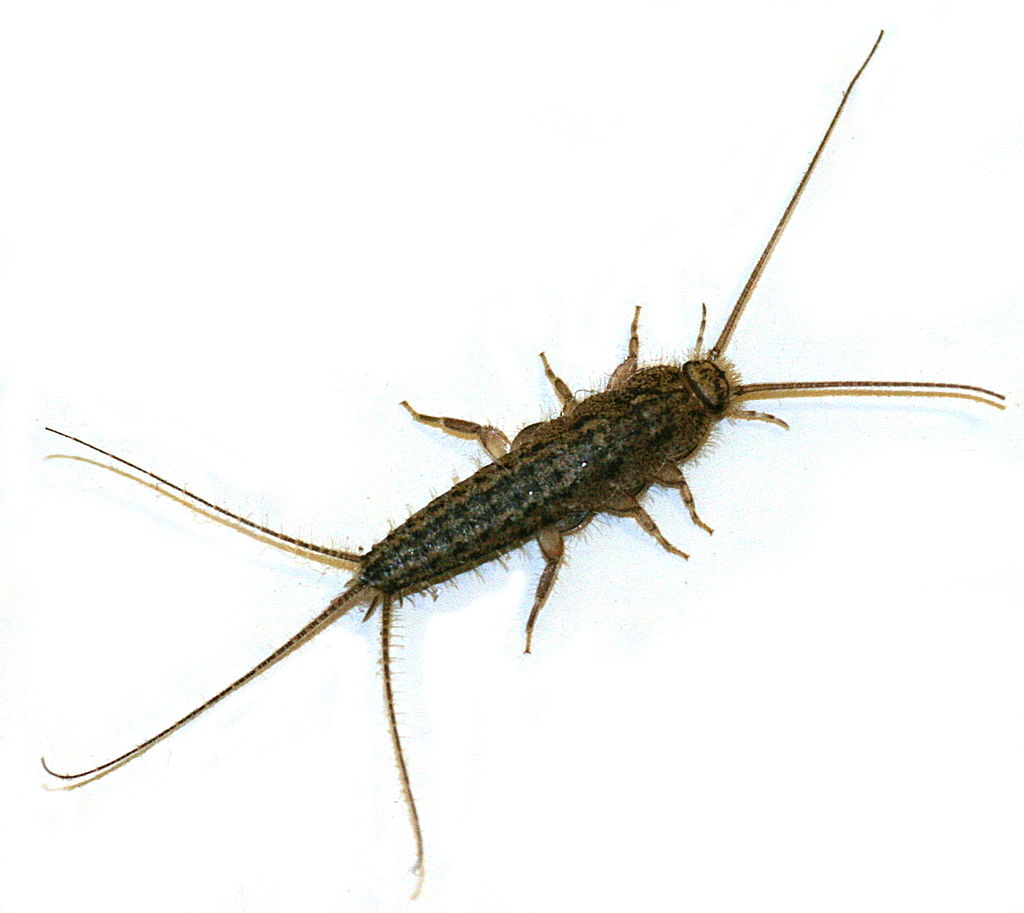SERVICE REQUEST?
Fill out the form below.
Find our nearest location
Your Local Office

Firebrat
Attribution: Paethon [GFDL or CC-BY-SA-3.0-2.5-2.0-1.0], via Wikimedia Commons
Size:
Up to ½-inch
Color:
May appear slightly silvery but is usually mottled with patches of light and dark scales.
Behavior:
Firebrats are a type of silverfish and have many of the same habits. Their biologies are similar as well. With quick movements, they dart rapidly to a crack when lights are turned on. Their bodies are flattened which enables them to hide in very small cracks or crevices, even within the confines of narrow book bindings, the loose pages of books, or in the corrugations of cardboard. Unlike most other insects, silverfish and firebrats develop without metamorphosis. The newly hatched silverfish nymphs look like tiny adults except that they do not possess the characteristic body scales found on larger nymphs and adults. Firebrats are scavengers and feed on molds, dead insects and other organic debris. They also will infest and attack stored food products, particularly stored oats and similar grain products, especially if the food is moist and has some molds. Firebrats are also known to be pests of old books and will feed on the pages. They also may feed on and damage wallpapers. They are extremely resistant to starvation and may be kept alive in a glass jar without food and water for weeks.
Firebrats prefer warmer temperatures; therefore they are often found near sources of heat such as furnaces, water heaters, in boiler rooms, etc. They are able to survive in drier conditions than most insects. For example, they have been found living in attics where temperatures have been known to reach 130°F and where the relative humidity is very low.
Firebrats can be very difficult to control. Efforts should be focused in areas which stay quite warm, although firebrats can be found throughout a home or building. In addition, firebrats often live in the soffits and behind the fascia board behind gutters. Individual firebrats then invade the interior of the home from this “reservoir” site. Blown-in insulation compounds the problem because it prevents a professional from safely venturing into the attic to look for active harborages. A pest control professional should be consulted when firebrats are a regular problem. Areas that may require attention and possible treatment include:
- Furnace rooms, boiler rooms, etc.
- Voids where plumbing is located.
- Voids behind electrical outlets.
- Molding around windows and doorways.
- The attic, crawl space and basement.
- The soffits.
Family Name:
Thermobia domestica
Read What Our Clients
Are Saying
My Terminix tech Scott is the best! He is professional, courteous and absolutely thorough about his job. Thank you for sending such a blessed tech to my house. Hamlet, NC
This letter is to say how pleased we are here at Morreene West Apartments with your services. We are very pleased with the technician, Christopher. He does a great job. Durham, NC
Terminix has consistently offered our apartment complex reliable, competent service. We are completely satisfied with their knowledgeable representative who is always punctual and does a superior job for us every time. Chapel Hill, NC
I would like to take the time to thank you for giving us such great service here at Carver Pond Apartments. Your Pest Technician Christopher Mitchell has provided us with excellent service over the last few months. Christopher is such a great help to us in providing helpful information so that we can better serve our residents here at Carver Pond. Durham, NC
SERVICE REQUEST?
Fill out the form below.